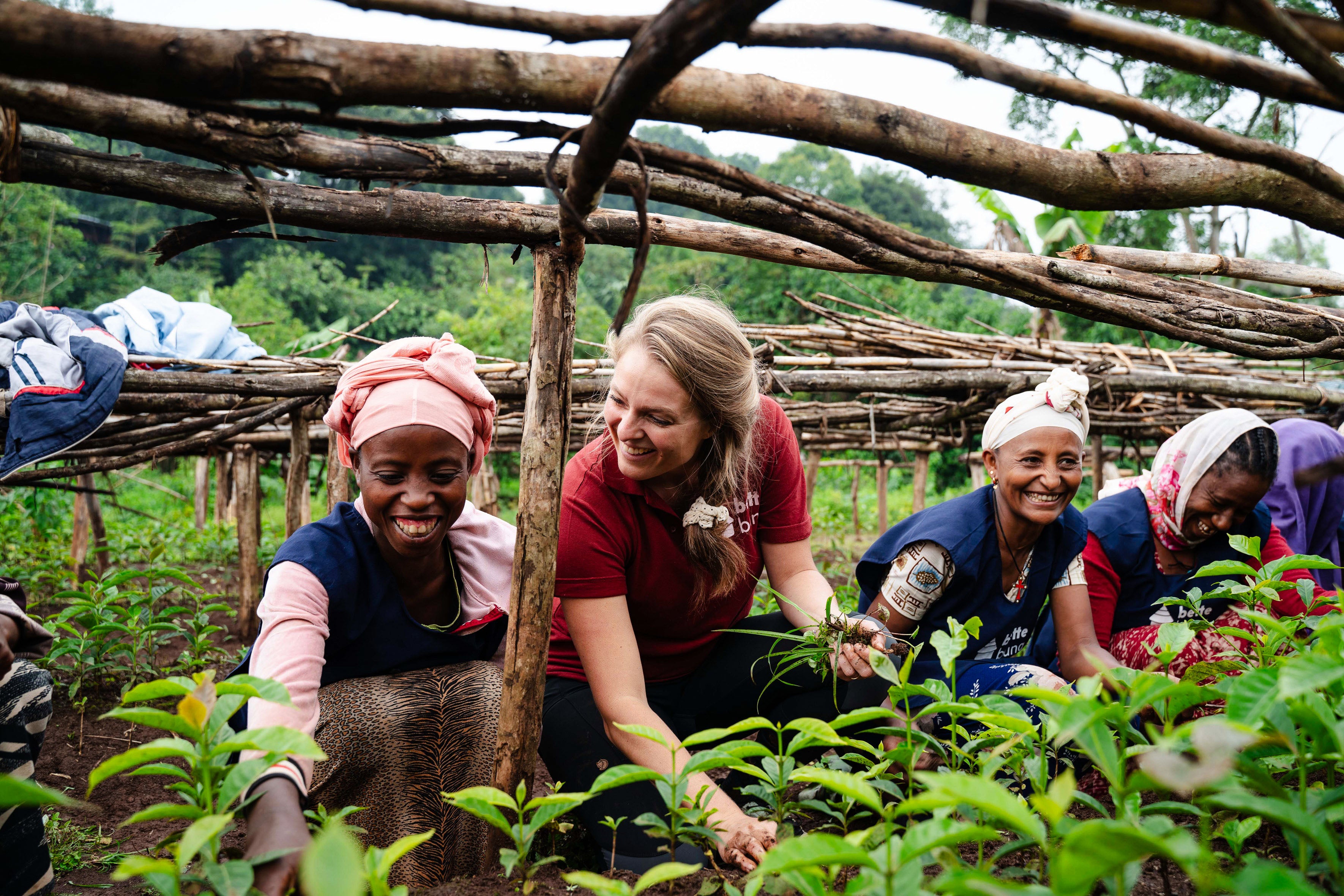Taferi Kela
Taferi Kela has all the conditions necessary to produce exceptional coffee: high altitude, ideal climate, rich fertile soil, healthy plant life, and most importantly, strong community.

Starting out with our 2 hectare family farm
When our grandfather Syoum passed away, our grandmother shared her dream for their 2-hectare coffee farm with us: “Please, keep our farm as a home for all our neighbors. A place where all community members can feel safe, learn and work together to grow a beautiful future through coffee.” However, their little family farm had been neglected for many years due to the severe income challenges that almost every small coffee farmer in our community faced. Between old mother coffee trees, eucalyptus was growing and exploiting the soil. Alternative incomes were not created at the farm, and alternative job opportunities were limited to a handful of people in highly populated areas.
Growing seedlings...
After inheriting the farm from our grandparents, we knew that to make a meaningful impact in our community we had to grow. Our first step was to ensure that the existing 2 hectares were healthy again, and then we expanded to 20 hectares. This included planting new coffee trees to grow high-quality cherries and removing old trees and invasive species like eucalyptus. Our aim was to grow into a model farm that serves a dual purpose: cultivating our land with a strong focus on specialty coffee while also educating fellow farmers in the community. By sharing our lessons learned, we aim to foster collective growth and strengthen the agricultural knowledge of our peers.
Facing the significant challenge of replacing our aging mother trees and removing the eucalyptus necessitated sourcing seedlings of new, climate-resilient coffee varieties. Recognizing that access to these seedlings would be a huge barrier to ourselves and our fellow farmers, we decided to take matters into our own hands by starting our own nursery. In our first year, we planted about 10,000 seeds, providing us not only with the necessary plants but also with valuable learning opportunities.
...and growing together
As it turns out, our nursery ánd farm have become a tremendous success! Every year, we distribute the surplus of 350,000 top quality seedlings to our community farmers, helping them enhance their own crops while sourcing coffee cherries from their improving quality harvests.
The nursery and farm have created inclusive job opportunities, employing over 106 individuals in 2025 on a full time basis. Most of the year they work in the nursery, but many are also employed at the wet mill we built for processing and drying cherries. The nursery, farm and mill allow us to educate people in the many different skills involved in coffee. We are able to professionalise coffee, teaching farmers about cultivation, harvesting, and post-harvest processing, and have even been able to put some members of our team through formal coffee qualifications.
We are proud of what Taferi Kela is today and excited about what it will become tomorrow
In our region, job opportunities are limited, so we've made it a priority to use our farm as a platform for alternative employment. One of our upcoming projects is establishing lodging facilities at the farm where we can host guests and groups for workshops, farm visits, or just a beautiful nature experience. This initiative aims to generate income that will not only support the farm's operations but also contribute to the development of our community. By welcoming visitors and sharing our story, we hope to foster economic growth and provide more job opportunities for our community members.
Rewilding and looking after our natural surroundings
Close to the farm in Taferi Kela there is a large patch of grassland that was once a thriving forest. One of our key goals as we've been growing the farm is to restore this vital ecosystem. We have been gradually acquiring the grasslands and collaborating with our community of farmers to regenerate and protect the original woodlands. While this project has been challenging and is still in its early stages, we are already seeing positive changes. After a few years of dedicated effort, vegetation is starting to reclaim pasture, and wildlife is becoming more abundant. This project not only helps restore the environment but also encourages biodiversity and supports the health of our community.